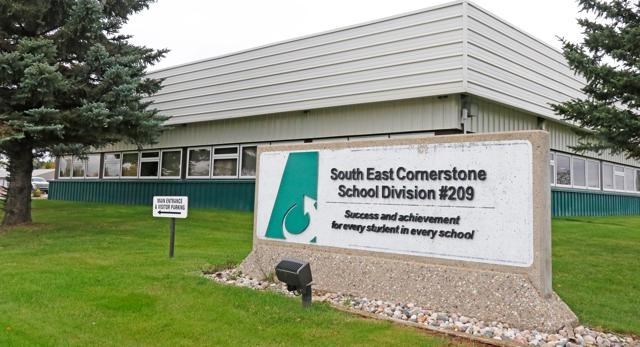WEYBURN - They had teamed up before and they were able to do it again to provide a detailed account of what student services means to the Â鶹ÊÓƵ East Cornerstone Public School Division, its teachers, counsellors, community and the students themselves.
Tracey Kiliwnik, co-ordinator of learning supports and Cheryl Anderson, co-ordinator of student services, spent about a half hour with the board members attending the school division’s monthly business meeting in Weyburn and online on May 18.
Kiliwnik explained that inclusive education is used to describe the paths used for students with diverse backgrounds who may or may not require additional support.
The goal is to provide paths so each student can reach full potential and gain independence as well as being able to contribute to society. In other words, by reducing exclusion, eliminating barriers to school success, the path is made clearer for the student.
Inclusion and intervention plans were outlined during the “tag-team” presentation that Anderson explained was a desire to address “the needs of all students.”
That sometimes required a broad band of support mechanisms and projects to get the student(s) to the required target of educational success.
Anderson noted the counsellors and educators could implement appropriate intervention techniques and tools using support staff and inter-professional teams to collaboratively support students.
She also explained how the intervention response model worked on a three-tiered system, with about five per cent of the students engaged in the process requiring intensive intervention and support, while most students in the intervention mode respond positively to universal intervention processes.
As an example, Anderson noted that English as another language (EAL) courses had 452 student participants this academic year. She noted as an aside, in response to a question, that this included one Ukrainian student newcomer so far, “but there will be more on the way.”
After the EAL students reach a B-1 level, following five previous steps to measure progress, they are ready to achieve success in school in a regular manner with no additional EAL accommodations required.
Some students required multiple interventions and supports, it was pointed out, so tracking their progress is done on a variety of graphs and data collection measures.
Kiliwnik said there were 199 students in the school division who were assigned intensive supports beginning in 2021, compared with 190 the previous year.
The disabilities may include items such as physical impairments as well as intellectual, mental or addictive impairments.
She explained how learning support teachers work collaboratively with classroom instructors to support the intensive, diverse need students within the classroom settings.
Kiliwnik also reported she had conducted a workshop related to inclusion and intervention to help teachers plan programs for students with autism.
It boiled down to what do they need, Kiliwnik said.
Web broadcasts with specialist Shelley Moore provided teachers with additional tools so “they’re not overwhelmed by added planning,” she said. “We can just look at the conversations they’re having,” she added. That leads to measurable and manageable goals under the SMART outcomes system that tracks such things as responses plus attainable and authentic goals.
Using “more specific goals to work toward a broad goal,” is the target, said Kiliwnik.
Another key is to plan areas of impact and have the student realize what they can do, rather than what they can’t. That helps to keep them involved, she said.
Interventions follow a set of steps, for student and teacher/counsellor, the duo said.
“We have brought focus back to incident reporting, that’s been there since 2014,” she told the board members. That includes such things as monitoring progress, data-based decisions, intervention recommendations, classroom management, accountability, improved communications and so on. The more information they can gather on incidents reports, the better the responses can be.
Counsellor data indicated that in SECPSD there are 16 full-time equivalent counsellors available and they responded to 1,073 students who required a degree of assistance.
That means that each counsellor dealt with about 57 students with 83 individual sessions per month, based on 19 school days per month.
“That’s about 4.4 students per day plus class presentations plus parent meetings and agency contact meetings,” said Anderson. “but, we’re on our way back.”
Experts deal with students with such things as body image dilemmas, addictions that include social media and gaming, sleep, and mental health issues.
Sessions are mostly done via classroom settings and three school divisions are included in the coverage area: SECPSD, Holy Family RCSSD and some Prairie Valley School Division schools.
Anderson also spoke about connections with families of those with intervention needs and she said there were plans for four such sessions this school year and more in the 2022-23 academic year.
The duo also said mental health consultant Raylene Forseth sends out staff newsletters on a regular basis to complete the circles and to link resources.
The Not Myself Today program is new this year, said Anderson. It’s a safe and supportive culture for the work sites and have included monthly presentations available to all the teachers.
In conclusion, Kiliwnik thanked Lynn Little, the director of education, who is retiring in June, for supporting the program for the past 10 years.
“You let us go forward. You made us investigate first and we had to lay out the facts and develop a template and share the strategy with all teachers. Over 200 people have been trained each year. We use consistent language so students hear the same messages even if they change schools.”





